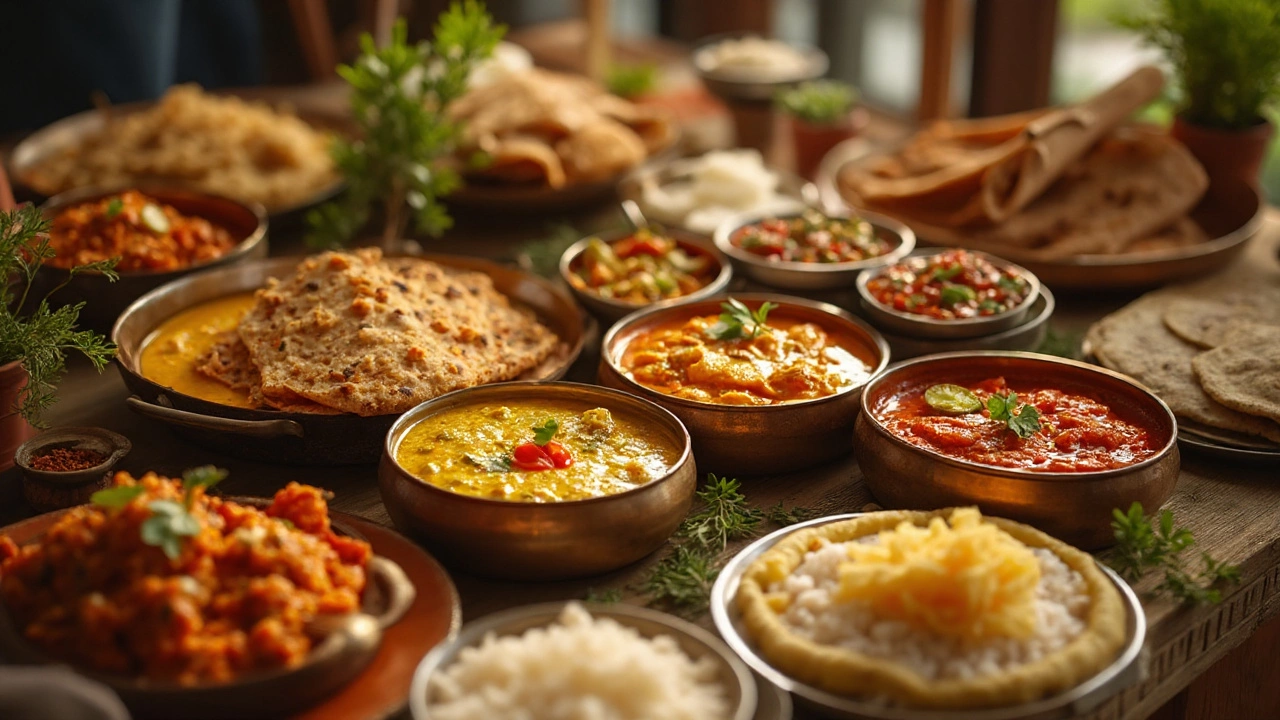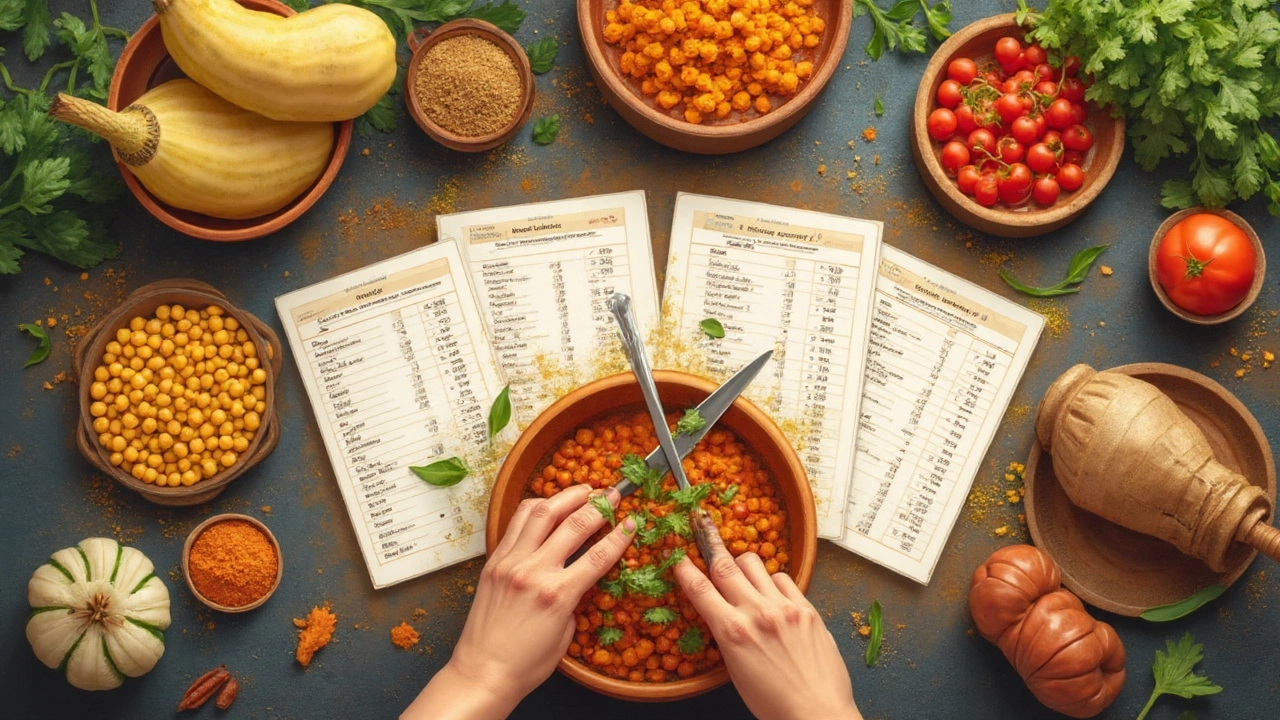If you think losing weight and loving Indian curry are mutually exclusive, you haven’t met the right curry yet. Picture this: you’re staring at a menu bursting with flavor-packed names like rajma, chana masala, palak, and more. Some folks will warn, “Curry equals calories,” but is that really true? Let’s get one thing straight: not all curries are created equal when it comes to your waistline. Some are seriously lean, naturally low in fat, and loaded with fiber and protein. In fact, certain classic Indian curries can actually help keep you fuller for longer and support your healthy-eating goals.
What Makes a Curry Good for Weight Loss?
Finding the best Indian curry for weight loss starts with knowing what makes a dish "diet-friendly" in the first place. Calories, of course, matter. But it's not just about numbers, it's also about nutrient balance, fiber content, and how filling the food is. Indian cooking often uses fiber-rich lentils and beans, vegetables with low glycemic index, and spices that support metabolism.
The best part? You rarely have to sacrifice big flavors for healthy choices. Curries like dal, chana masala, rajma, and palak base dishes tick all the right boxes: they’re usually low in saturated fat, brimming with plant protein, and keep you feeling satisfied. Opting for curries that skip the heavy use of cream, butter, and oil is key if you’re watching calories. Also, going easy on ghee and skipping that second helping of rice adds up. You want curry that doesn’t sneakily hide calories—instead, look for dishes where taste comes from spices, not fats.
A research study published in the Journal of Nutrition and Metabolism (2022) found that regular intake of pulses (think dal, chana, rajma) lowered total daily calorie intake in overweight adults by about 12% after 8 weeks, compared to meals rich in refined carbs and fried snacks. Ever wondered why you feel fuller after eating a bowl of dal than a single samosa? It’s about satiety—the slow-release carbs and fiber in beans and lentils give you that content, not-stuffed but not-hungry feeling, which helps prevent mindless eating later.
I’ve talked with nutritionists who say, “Don’t underestimate simple veggie curries.” Spices like turmeric, cumin, and ginger add lots of anti-inflammatory perks, while keeping the calories next to nothing. Homemade versions using grilled or boiled protein, plenty of spinach or other greens, and measured oil or ghee make for far lighter dishes than restaurant takeout.
Most Popular Indian Curries for Weight Loss
Let’s break down which Indian curries are really worth putting on your weight-loss radar. Not all bowlfuls are created equal! If you’re aiming for maximum taste and minimum calories, go for recipes loaded with plant protein and veggies, not cream-based gravies or fatty meats. Here are all-stars you’ll keep coming back to:
- Dal Tadka/Dal Fry: Made with lentils (toor, moong, masoor), minimal oil, and loaded with spices like cumin, mustard seeds, ginger, and garlic. Skip the extra tempering of ghee for an easy, low-fat meal.
- Chana Masala: Chickpea curry cooked with tomatoes, onions, and a medley of warming spices. Lots of fiber and plant-based protein with hardly any saturated fat if you limit oil.
- Rajma: A classic red kidney bean curry. Very filling, thanks to complex carbs and high fiber. If you stick to a simple tomato-onion gravy and avoid frying, it’s perfect for lunchboxes.
- Palak (Spinach) Curry: Palak dal, palak paneer (use low-fat paneer or tofu), or even palak chole. Spinach is super low-cal but adds volume, iron, and a satisfying texture to curries.
- Lauki ki Sabzi (Bottle Gourd Curry): Not only light but also hydrating, easy to cook, and great for digestion.
- Mixed Vegetable Curry: The best curries for variety—use carrots, beans, peas, cauliflower, and skip the cashews or cream.
Now, about the ones to dodge—chicken tikka masala, malai kofta, butter chicken, and creamy paneer curries are delicious but stealthy calorie bombs, loaded with cream, butter, or fried casings. Homemade recipes you control always outshine restaurant versions, where oil and ghee can be poured by the ladle-full.
Ever tried khatta meetha kaddu (sweet-sour pumpkin curry)? It’s not just comforting but also seriously low-cal. Same goes for tinda masala (apple gourd) and bhindi masala (okra). These veggie-focused curries will have your hunger satisfied without blowing your calorie budget.

How to Make Indian Curries Healthier At Home
Is there really a way to enjoy deeply spiced, creamy-tasting curry that fits well into a diet plan? Absolutely. A lot comes down to kitchen tricks and being choosy with ingredients. You’d be surprised at how swapping a few things—oil, cream, and carb-heavy rice—for lighter options can change the whole game.
For starters, use non-stick pans, which need much less oil than traditional cookware. Try replacing half or more of the oil in recipes with water or vegetable stock: this still lets the spices bloom. For creaminess, blend cooked onion, tomato, or even a small chunk of boiled pumpkin or cauliflower into your gravy—the texture mimics the fattiness of cream without the calories.
Opt for pressure-cooked or boiled chickpeas, lentils, and beans over canned versions, where you can control the salt and skip preservatives. Throw in greens like spinach, kale, or methi—these bulk up the curry, add vibrant color, and load you up on iron, calcium, and antioxidants without calorie baggage. If you crave chicken or eggs, grill or boil proteins instead of frying them before tossing into your gravy. Tofu is a brilliant substitute for paneer and soaks up spices just as well.
Worried spices will give you “empty calories”? Not the case. Spices like cinnamon and fenugreek actually help control blood sugar and, according to research out of the Indian Council of Medical Research, can slightly boost calorie-burning after meals. For thickening gravies, blend a spoon of cooked masoor dal or cooked cauliflower. Skip the cashew paste.
Here’s a table showing calorie breakdowns for popular curries per 200g serving (homemade, not restaurant-style):
| Curry | Calories | Protein (g) | Fiber (g) |
|---|---|---|---|
| Dal Tadka | 185 | 12 | 7 |
| Chana Masala | 200 | 9 | 9 |
| Rajma | 210 | 11 | 8 |
| Palak Dal | 170 | 10 | 6 |
| Mixed Veg Curry | 140 | 4 | 5 |
These swaps are easy, and you won’t even miss the calories. Don’t forget, the biggest trap at home is often overdoing the carbs. Try going halvsies on rice with cauliflower rice or swap out rotis for multi-grain or bajra flatbreads.
The Science Behind Curry, Satiety, and Weight Loss
If you’ve ever wondered why classic Indian food feels so nourishing on a diet, here’s the secret sauce: built-in satiety. Lentils (dal), chickpeas (chana), and beans (rajma) are loaded with resistant starch and soluble fiber—two factors that help you feel full for longer. Unlike simple carbs, these don’t spike your blood sugar, which means fewer hunger pangs and less snacking.
Plus, a lot of Indian curries use turmeric and black pepper. Aside from flavor, turmeric’s active compound, curcumin, may have roles in regulating fat metabolism and reducing inflammation in the body. According to the “Indian Dietary Pattern and Obesity” cohort study published in Frontiers in Nutrition (2023), adults who ate more home-cooked dal or chana-based curries had lower BMI and smaller waist circumference, even after accounting for lifestyle differences.
Fat-fighting isn’t magic; it’s about what you put into your bowl. The slow-digesting complex carbs in dals and legumes mean less temptation to nibble on sugary or fried snacks later. The real power players are these low-glycemic, high-fiber foods that keep blood sugar stable.
And let's talk about portion control for a second. Even healthy curry can become unhealthy if you pour ghee all over your plate or chase it with three huge naans. Use bowls instead of plates to trick your mind into being satisfied with less, and balance your meal with a serving of fresh salad or raita rather than heavy chutneys or fried papads.
“Homemade curries based on beans, lentils, and vegetables deliver nutrition that supports weight management and metabolic health, as opposed to cream-heavy or fried options.” — Dr. Neela Reddy, Clinical Nutritionist, Mumbai
How spicy you go also makes a difference. The natural heat from chilies and pepper can moderate appetite thanks to capsaicin, which slightly boosts metabolism for a few hours. Just don’t count on spice alone to melt pounds—it's the whole food profile that matters most.

Tips for Ordering or Cooking Weight Loss-Friendly Indian Curry
If you’re eating out or ordering in, you don’t have to ditch Indian food just because you’re watching your calories. Just remember to go in with a game plan and a little curry-choosing wisdom.
- Stick with dals, chana masala, or tinda/lauki curries. Avoid anything described in the menu as creamy, malai, makhani, buttery, or fried.
- Ask restaurants to make curries with "less oil" or "no cream." Many places, especially in India, are happy to do this if you ask upfront.
- Pair curries with brown rice, millets, or a small whole wheat roti instead of large portions of white rice or naan. Portion size matters a lot!
- Skip side orders like papad, fried pakoras, or rich pickles, which are sneaky sources of calories and saturated fat.
- At home, use more veggies and greens. Shred carrots, add chopped spinach, or throw in extra tomatoes and peas to bulk up your curry and boost nutrition.
- Think about homemade raita made with low-fat yogurt, diced cucumber, and roasted cumin for a cooling, protein-rich side.
- Leftovers make life easier—next-day dal or rajma thickens and lets flavors develop, and a small bowl can make a filling snack when hunger strikes.
Here's a pro tip: batch-cook a big pot of chana masala or dal, freeze in portions, and reheat when cravings hit. The flavors actually get better, and you sidestep the temptation to order heavy takeout when you’re tired.
Consistency is everything. Enjoying indian curry weight loss success is less about drastic restrictions and more about steady, sustainable habits. So, next time you’re eyeing a bowl of dal or chana, know you’re making a tasty move for your health—and your goals.
